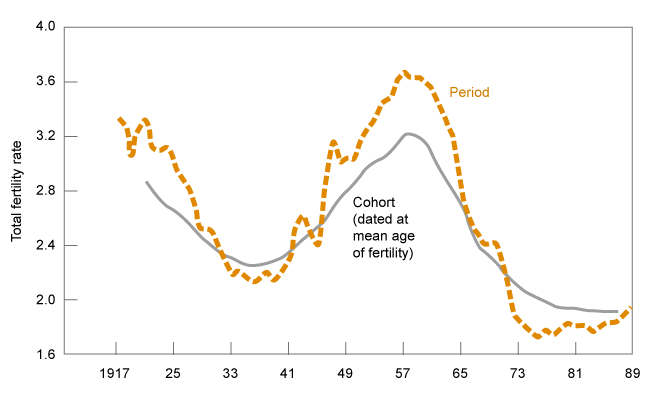Self-assessment questions
Question 1
![]() The figure below shows trends in the period and cohort TFR for the US (1917-1989).
The figure below shows trends in the period and cohort TFR for the US (1917-1989).

Source: Adapted from Ryder (1990)
(a) Can you explain why the period TFR dips below the cohort TFR for the mid 1930s and peaks well above the cohort TFR for the late 1940s?
The great depression of the 1930s led to the postponement of marriage and childbearing. A delay in the timing of childbearing depresses the period TFR compared to cohort measures of completed family size. The peak in the late 1940s is produced by the reverse pattern. In this period, women and families returned to a “normal” age-pattern of childbearing at the same time that the older women who postponed childbearing during the war were still recuperating some of the foregone births. These timing changes inflate the period TFR compare to cohort measures of fertility
(b) Do these data suggest that the baby boom of the 1950s is entirely the result of a tempo effect? Why (not)?
No, even the cohort TFR increases by more than half a child between the mid-1930s and the mid-1950s, which suggests that the baby boom was at least in part the result of a quantum increase in fertility.